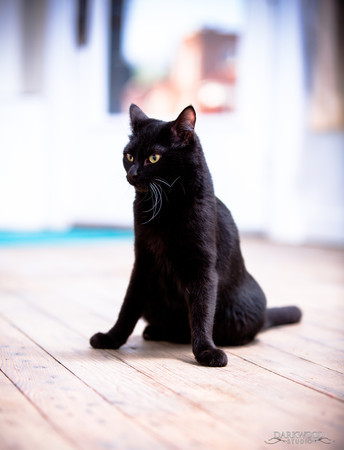Cerebellar Hypoplasia (CH)
Learning more about the condition
What is cerebellar hypoplasia?
Cerebellar hypoplasia (CH) is a widely misunderstood condition. Basically, CH is the underdevelopment of a cat's cerebellum, which is the part of the brain responsible for balance and coordination. Cats with CH have mild to profound motor coordination issues. (Source: The CH Cat Community)
Is CH contagious? How does a cat contract the condition?
Cerebellar hypoplasia is not contagious. It most commonly occurs in-utero when a mother cat contracts distemper (panleukopenia virus) while pregnant with kittens. CH can also occur if a trauma, including malnutrition, takes place while kittens are still in the womb (chcat.org). CH is not progressive; it does not worsen with age. In fact, some CH cats improve their coping skills as they grow and are better able to maneuver themselves with maturity and strategies.
 What are the symptoms of cerebellar hypoplasia?
What are the symptoms of cerebellar hypoplasia?
* A cat may fall over for no visible reason
* High stepping, "bicycle gait", prancing style of walking, or walking loudly
* Lack of balance
* Jerky movements, lack of grace
* Difficulty climbing stairs and/or jumping up
* Some with profound CH may have trouble walking more than a few steps before falling
* Tremors, particularly when focusing on something
* Pecking-style of eating
* Overall wobbly nature
How can I care for a cat with CH?
Sadly, cats with cerebellar hypoplasia are often euthanized due to a lack of understanding of their condition. Many people mistakenly think the cat is in pain or is unhappy. Conversely, these cats have a normal life expectancy and are very affectionate, sweet, and loving. Care for them, depending on the severity of their condition, can be quite simple or more intensive:
* Spayed/neuter and vaccinate, just as you would for a typical cat
* Keep indoors
* Never declaw
* Be aware that more accidents can happen with these cats. Therefore, carpeting is a preferred surface for their home. Also, homes without steps may be necessary, depending on the severity of the cat's CH.
* Provide a litter box with high sides and a low entry. This enables the cat to enter with ease and then use the high sides to brace himself while he eliminates.
* Occasional baths after accidents
* Raised food/water dishes
* Add bumpers to make sharp corners and furniture less treacherous
For more information, see the following resources:
* Cerebellar Hypoplasia Cats & Kittens
* Life with CH Cats
* The CH Cat Community
* CH Kitty Club
Are you interested in adopting a CH cat? Or fostering? Contact our adoptions or fostering departments for more information!